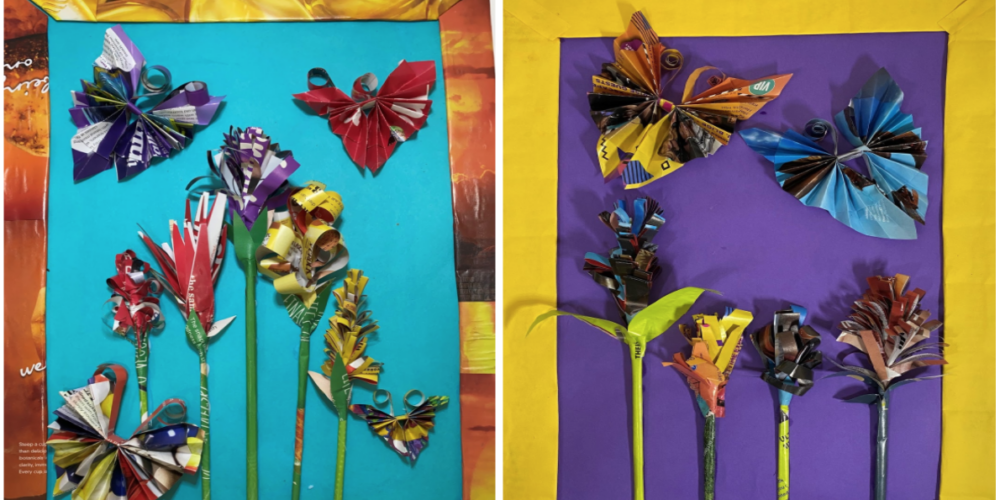Watch the video tutorial below:
Ebony G. Patterson’s artwork can be described as lavish, opulent, and captivating, even as it deals with complex issues of pain and oppression. She uses various mediums such as paper, felt, fabric, beads, and photography, and across her work is the unifying theme of gardens and flowers. For Patterson, the garden is a metaphor for control. Who are they named after? Who cares for them? She uses beauty and embellishment as a way to draw the viewer in for a closer look. Once we are there, we discover that these vibrant artworks have tears in the paper, incomplete body parts, and other clues that the scene is less delicate than at first glance. Her artworks are an invitation to reflect on cycles of destruction and creation, both their beauty and violence.

For ages: 8 years–adult
Time it takes: About 60 minutes
What we’re going to do:
- Create two-dimensional wall art using recycled and repurposed materials of magazine pages and cardboard.
- Use origami techniques to construct flowers and butterflies using paper by rolling, cutting, and folding.
You’ll need:
- Magazine pages
- Scissors
- Cardboard
- Construction paper
- Posterboard
- Glue
Before we start:
Begin by watching the video and looking at the images within Patterson’s …and the dew cracks the earth, in five acts of lamentation…between the cuts…beneath the leaves…below the soil… (2020).
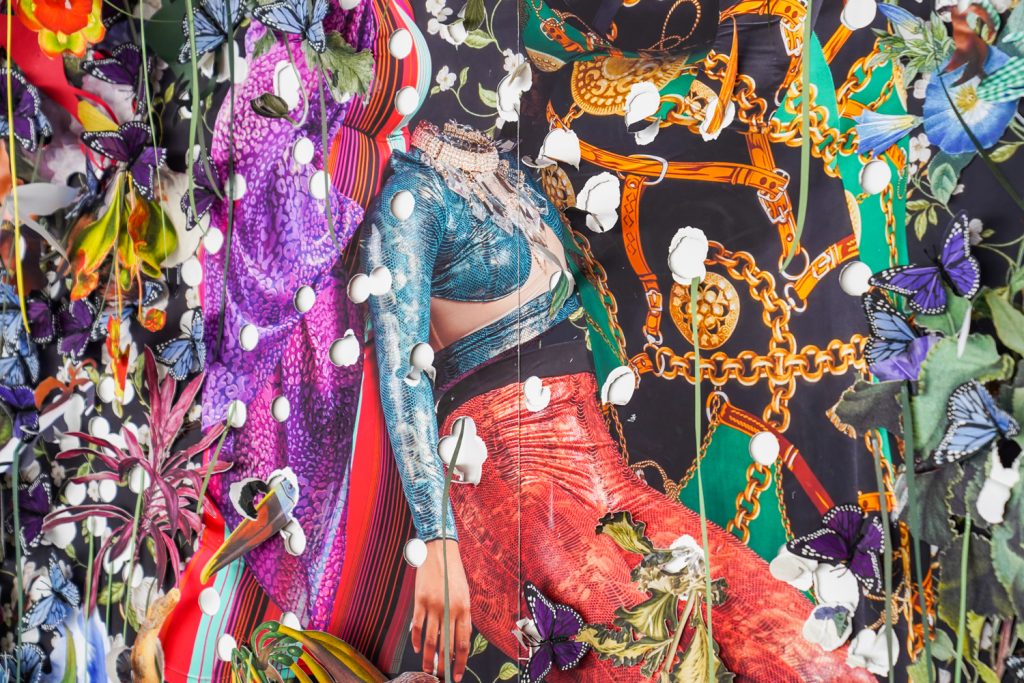
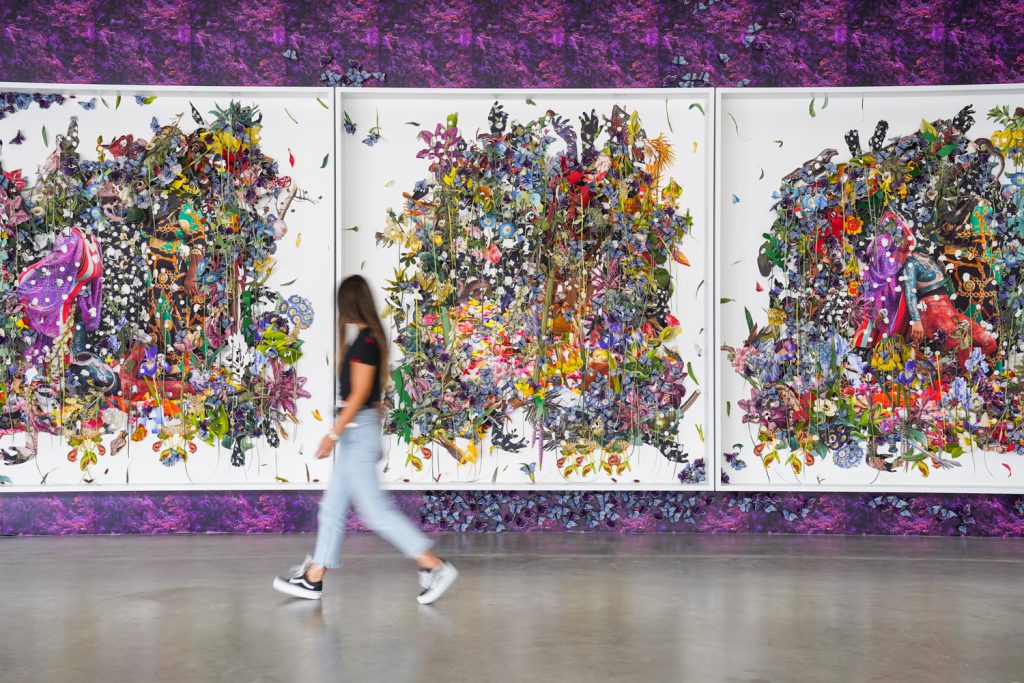
Think about:
- What materials do you notice the artist has used? What has she done to manipulate these materials?
- Can you find a story or narrative in these panels?
- As you look closer, what details have surfaced that you had not noticed before?
- Have you noticed the individuals in the panels? Why do you think the artist depicted people without heads?
- There is richness and beauty in the artwork. Can you find other words to describe her artworks?
Art Activity
We will be making paper flowers and butterflies, symbols, and imagery found in Patterson’s work from magazine pages.
To make paper butterflies:
1. Remove a page from a magazine (it is suggested to use more colorful pages). Trim the jagged edges with scissors so all the edges are straight. A ruler is a useful tool for this.

2. Fold the page in half lengthwise. Open up the paper, fold one half in at the crease, and then do the same on the other side.

3. With both sides folded in at the crease, take the top right and fold it out away from the crease to make a triangle. Do the same on the opposite side. Now go to the bottom of the page and do the same as you did at the top of the page. At the end of this step, you will have four triangles facing away from the middle crease.

4. Choose one end and begin folding it like an accordion back and forth until you reach the other end.

5. Set the accordion folded paper to the side, take a new magazine page and cut a ¼ inch strip of paper widthwise. Then fold it in half and curl in or roll in both edges to make the paper butterfly’s antennas. The magazine strip can be rolled or scissors can be used to curl the ends. Set that aside.
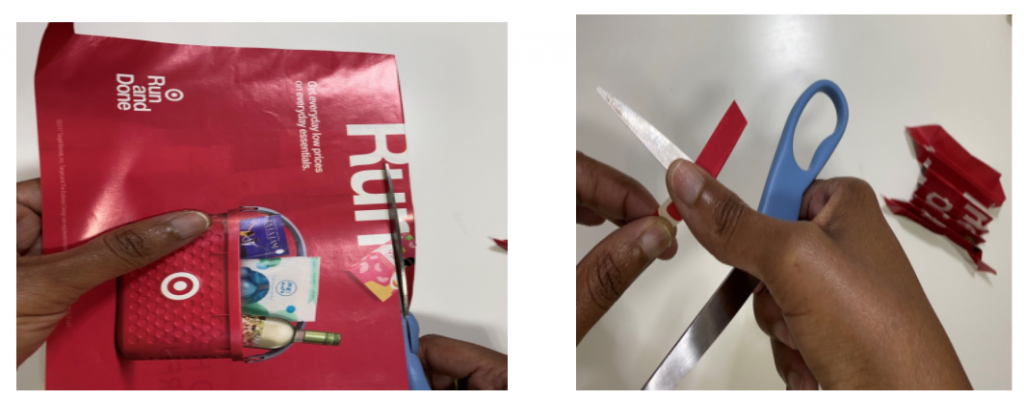
6. Now cut another ¼ inch of paper lengthwise and fold it in half widthwise. Cut the piece at the crease. Pick up the accordion paper and place the antenna paper at the top of the accordion paper. Now take one of the stripes and wrap it around the accordion paper and the antenna. Once wrapped, secure it with glue.

7. You now have a butterfly. You can glue the bottom portion of the accordion paper wings together to help the butterfly keep its shape.

To make a paper stem:
1. Remove a page from a magazine (a green-colored page is recommended). Trim the jagged edges with scissors so that all the edges are straight.. A ruler is a good tool for this..
2. Fold the paper in half lengthwise. Then cut the piece in half at the crease. Choose one corner edge and roll it inward on a diagonal.
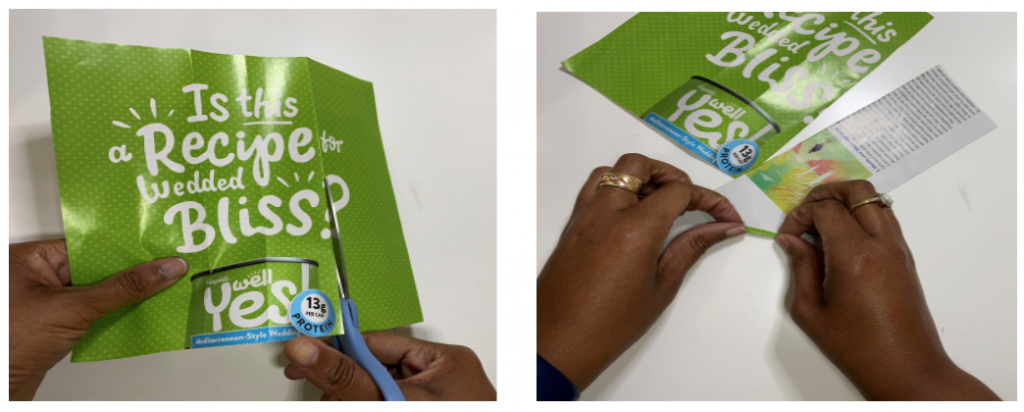
3. When you get to the end of the paper, secure it with glue, and you now have a stem to apply a flower.

To make paper flowers (fringe):
1. Remove a sheet from a magazine. Trim the jagged edges with scissors so all the edges are straight. A ruler is a good tool for this.
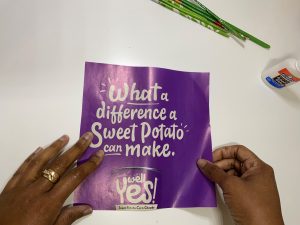
2. Now fold the page inward three times like a pamphlet.

3. On the side with the closed edge, take scissors and cut ¼ inch widthwise, but do not cut entirely through to the other edge. Leave at least ¼ inch between the cut and the end of the edge of the paper. It will look like a fringe but not loose.
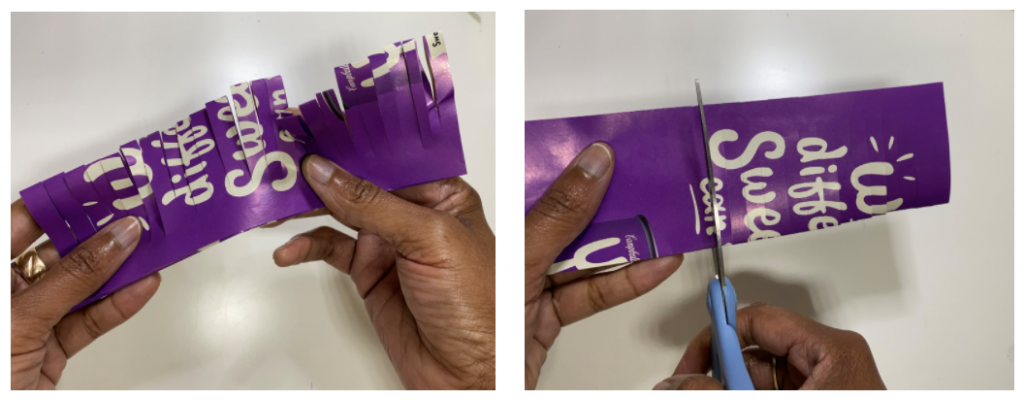
4. Now apply glue to one side of the fringe that is not cut. Take the paper stem and wrap the edge-glued paper around the stem.
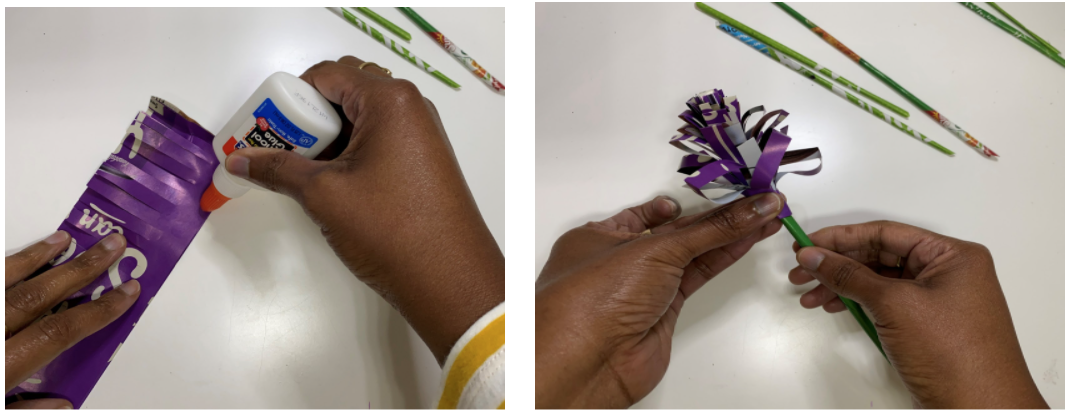
5. Cut a small square from the magazine page to cut leaves and add with glue to the flower’s bottom.

To make paper flowers (curly):
1. Remove a page from a magazine. Trim the jagged edges with scissors so all the edges are straight. A ruler is a good tool for this.
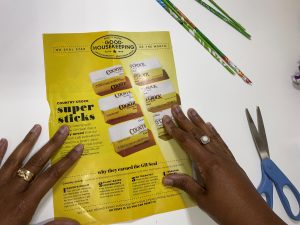
2. Fold the page in half and cut it lengthwise at the crease.
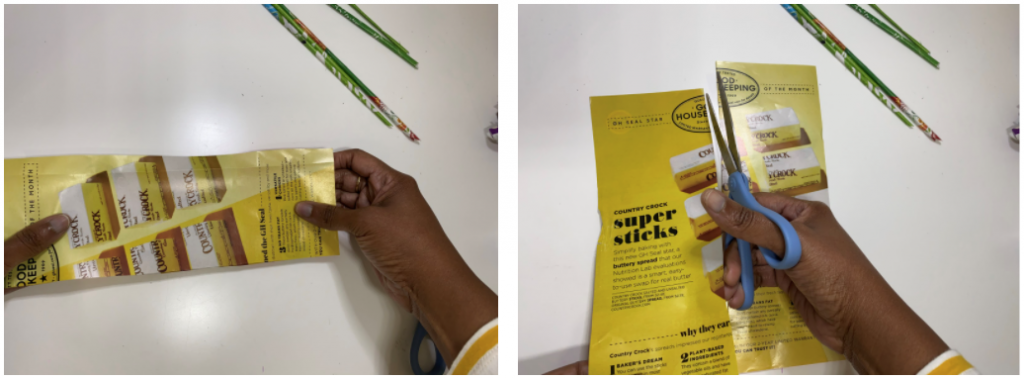
3. Take one half and fold ½ inch in and then release it. This will be your reminder not to cut the edge.
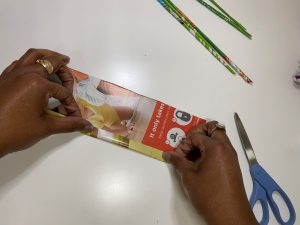
4. Now cut widthwise, ½ inch or ¾ inch fringe from end to end.
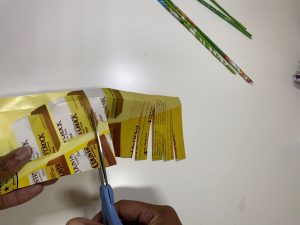
5. Now very carefully take the end of the scissors and curl the fringe. You can also roll the paper in to make curls.

6. Then apply glue to the uncut edge and wrap it around the stem paper.

7. Leaves can now be cut from a small square of magazine paper.

To make background/ frame:
1. Take half a poster board ( 12 X18 inches). If poster board is not available, cardboard can be substituted. Then cut a piece of construction paper the same size and glue it on top of the poster board or construction paper.
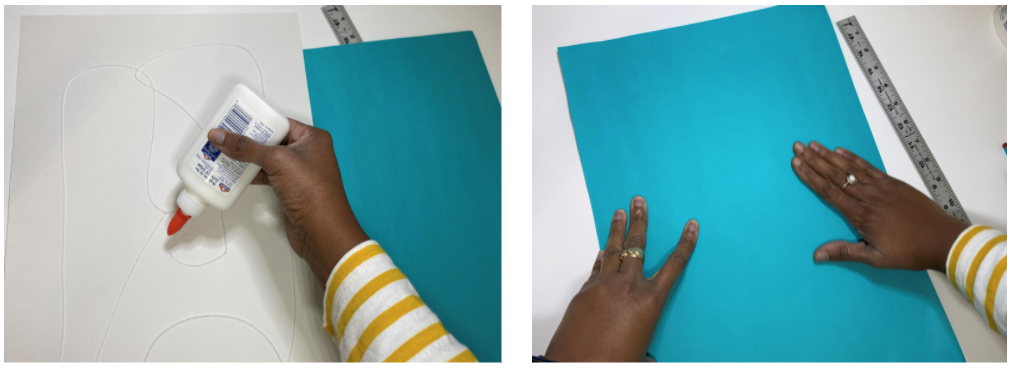
2. Then cut two cardboard strips about 1 inch wide by 18 inches long. Then cut two cardboard strips 1 inch wide and 12 inches long. Lay them out like a frame and at a diagonal at each end, so it lays even. Then cover frames with magazine pages or construction paper.

3. Then glue the frame in place on top of the construction/poster-board paper.
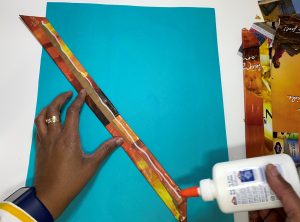
Finally, attach butterflies and flowers:
1. Now apply glue to one side of the flowers and butterflies. Arrange flowers and butterflies in a way that is appealing to you.
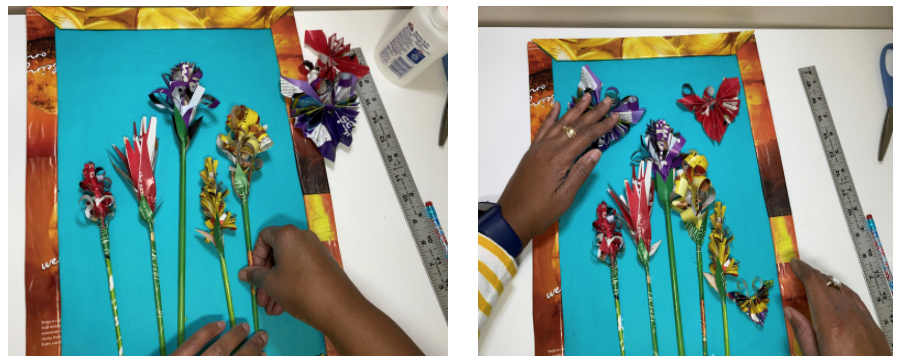
Terms:
- Sculpture
- Recycle
- Origami
In the Garden is inspired by Ebony G. Patterson: …when the cuts erupt…the garden rings…and the warning is a wailing….
